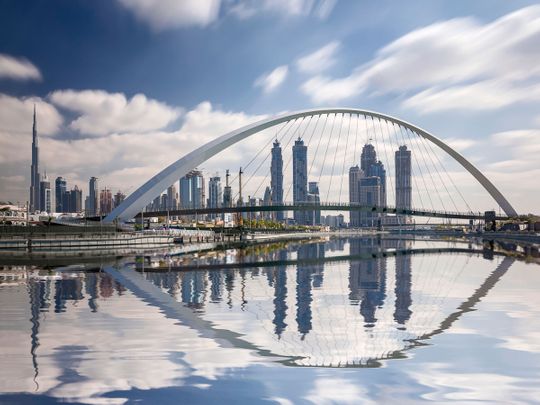
Analysts at the International Monetary Fund (IMF) spend most of their time looking at the world’s economy, at global trade and output, at markets and at the factors and elements that together might impede its performance or offer challenges. On Tuesday the IMF released its latest World Economic Outlook, a report that makes for interesting reading.
IMF predicts that globally, the global economy would grow at a rate of 3 per cent this year, reflecting a slight downward revision of 0.2 percentage points. Given all of the factors at play, that’s still a healthy rate of expansion.
The report also looks at the UAE and, significantly, envisages that the national economy will expand by 2.5 per cent annually now through to 2024. That’s a very positive outlook, one that certainly reflects the efforts and initiatives of the government and businesses to streamline efficiencies, become more productive and to move more goods and materials through our factories and ports.
The UAE is strategically located at the crossroads between east and west, north and south. Its ports and the container ships passing through them carry goods to markets around the world.
And given that the spectre of tariffs on some of the goods carried in those containers has now been introduced as a factor in trading relationships between China and the US, the 3.0 per cent growth rate for the world’s economy reflects the current state of play.
The report also looks at the UAE and, significantly, envisages that the national economy will expand by 2.5 per cent annually now through to 2024. That’s a very positive outlook, one that certainly reflects the efforts and initiatives of the government and businesses to streamline efficiencies, become more productive and to move more goods and materials through our factories and ports.
As those barriers are removed through negotiations between the current administration in Washington and the leadership in Beijing, that 3.0 growth rate has significant room for positive improvement — and quickly too.
Tariffs are one element — yes, a significant one — that have an immediate effect on economic and trading conditions. With a presidential election due in the US next year, there’s every likelihood that many of those tariffs will be removed, providing a boost for US producers and consumers — with an immediate knock-on effect to all of the factors covered in the IMF report.
What needs to be remembered is that this report is but a snapshot now and an extrapolation of current data that reflects the unique economic circumstances in place. Certainly, that 2.5 per cent growth rate for the UAE will also rapidly increase as soon as those tariff impediments are removed or reduced.
We are aware that the global and regional economies have faced challenges on the geopolitical stage. In that regard, this report is certainly one that views that glass as being half full — and rightly so.







